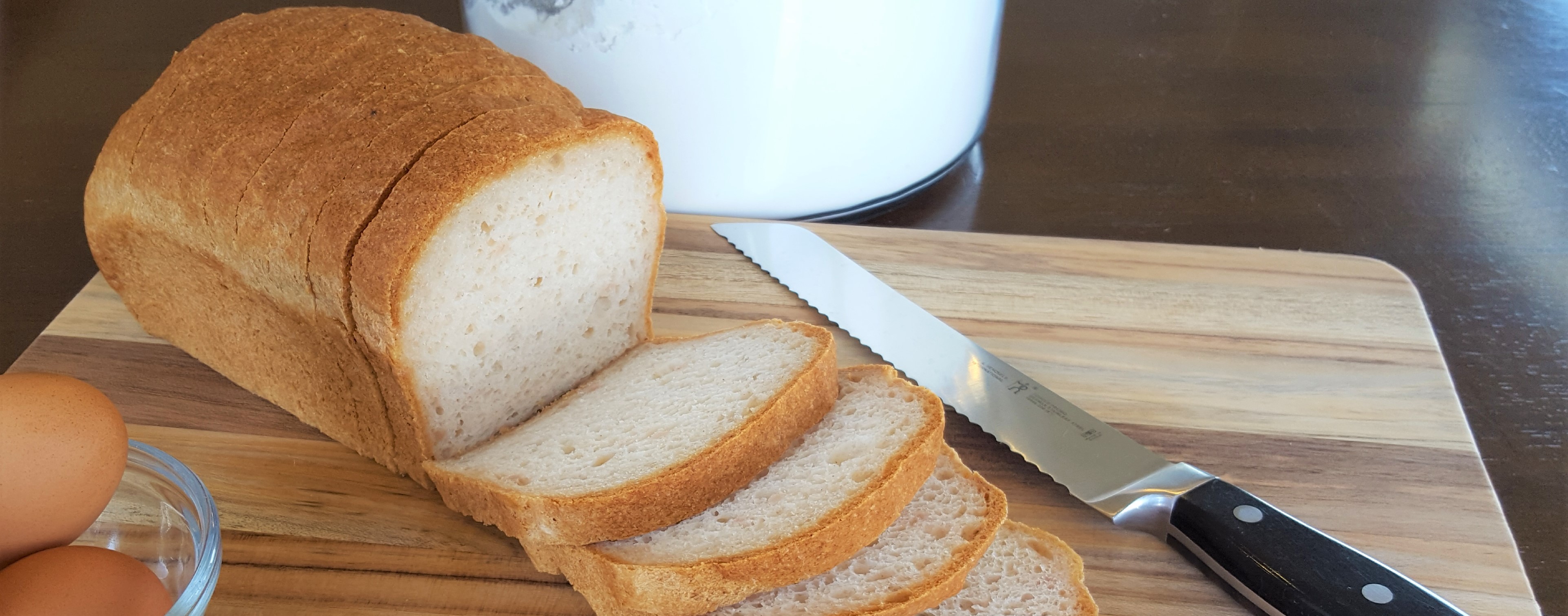
We take great pride in the gluten free bread we've developed over the years. First and foremost we love the flavor. It just tastes so good.
We don't want to load the bread up with preservatives to give it shelf life. We want you to enjoy the best gluten free bread on the market without worrying about any ingredients you have to look up on the internet. It's just better that way. Only the ingredients that make the bread taste so good but also give it such great texture. One great thing about our small bakery is that you can get the bread not long after it's baked. We try to make sure fresh bread is available Wednesday through Sunday but depending on demand, we can run out quickly. Sometimes it's even fresh on Tuesday. Otherwise, we try to keep plenty in the freezer for long term storage.
Time is not on our side. The bread is at its best within three to four days after it is baked after which the moisture
drops rapidly from there. We've all been there, right? You bite into your gluten free sandwich and all the moisture
is wicked out of your mouth. You can't even swallow without half a glass of water. We don't want that to happen to you with
this bread but we can't stop it from drying out. The best we can do is get you the bread as soon as possible after it's ready.
So what's the best way to store the bread? The best texture will be within four days of the bake date, storing it in a cool, dry place. It doesn't have to go into the refrigerator if you eat it quickly enough. Keep it away from warm areas of your kitchen and definitely not in the sun. However, we can't all eat bread that fast, so you can either store it long-term in the freezer or keep it in the refrigerator. Keeping it in the refrigerator will appear to dry the bread out, but will also postpone the growth of mold. The freezer isn't perfect either but the bread holds up extremely well when frozen and is absolutely the best way to store the bread for an extendend period of time. Some customers buy several loaves at once, storing most in the freezer for later use.
Even if the bread loses some moisture on the outside, you can still bring it back to life with a quick warm up in the toaster. You're not making toast. Set your toaster on the lowest setting and just warm the bread up a little. It will go a long way to bring the cool gluten free bread back to it fresh baked texture. This works for all gluten free breads, not just ours. However, when it does dry out a little too much, you can still make toast, french toast, croutons, breadcrumbs or stuffing as long as there are no signs of mold. In fact, for breadcrumbs, the drier the better. If you're really into cooking, how about some gluten free toast at the bottom of your eggs benedict?
Unfortunately, many gluten free breads have sacrificed some nutritional value to make the bread appear similar to traditional breads. We've been able to add more nutrition in the recipe while presenting a beautiful loaf of bread. Some highlights include:
We're going back to a time when your bread was fresh, before the chemicals were added. Just the quality ingredients and the care it takes to make gluten free bread this good. Bread you can hardly tell is gluten free.